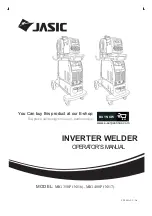
18
Internal Crossover Network
The circuit topology, combined with the acoustic behavior of the 1501AL and
476Be, provides a 24dB-per-octave transition at 700Hz. This is the primary
crossover point of the system. Additionally, the 045Be-1 is turned on above
20kHz to provide extended response to beyond 50kHz. A second 1501AL
woofer is used from below 30Hz to around 150Hz, at which point it is gently
rolled off at 6dB per octave. The design intent is to use both woofers in the bass
frequencies and slowly transition to a single woofer in the midrange. This
technique allows a primary crossover point between just two drivers and
permits proper control of the directivity pattern of the system, while providing
tremendous power and air movement capabilities at the lower frequencies. As a
result, the speed and power of the DD66000 system are unmatched, from the
lowest to the highest frequencies.
All of the electrical components are of the highest quality and exhibit the
lowest internal loss. The inductors used are “air core” so as not to introduce
nonlinear hysteresis effects. Capacitors are constructed using polypropylene
foil, which is known for having minimal distortion caused by dielectric
absorption nonlinearities. The mid-, high- and ultrahigh-frequency networks
employ battery bias to operate the capacitors effectively in a Class A mode.
Every attempt is made to present as smooth a system impedance as possible
to the driving amplifier. This design element is often overlooked in many
loudspeaker systems, yet amplifiers work their best when they are given a
smooth, level load impedance in which to deliver current
(Fig. 5).
Figure 5 – DD66000 system impedance
The aggregate of these attributes allows the DD66000 system to translate the
electrical signal from source material into an accurate and unencumbered three-
dimensional sound field. The system can do this at any desired listening level,
from whisper-quiet to big-band loud, while at the same time maintaining
unchanged acoustic characteristics.
















































